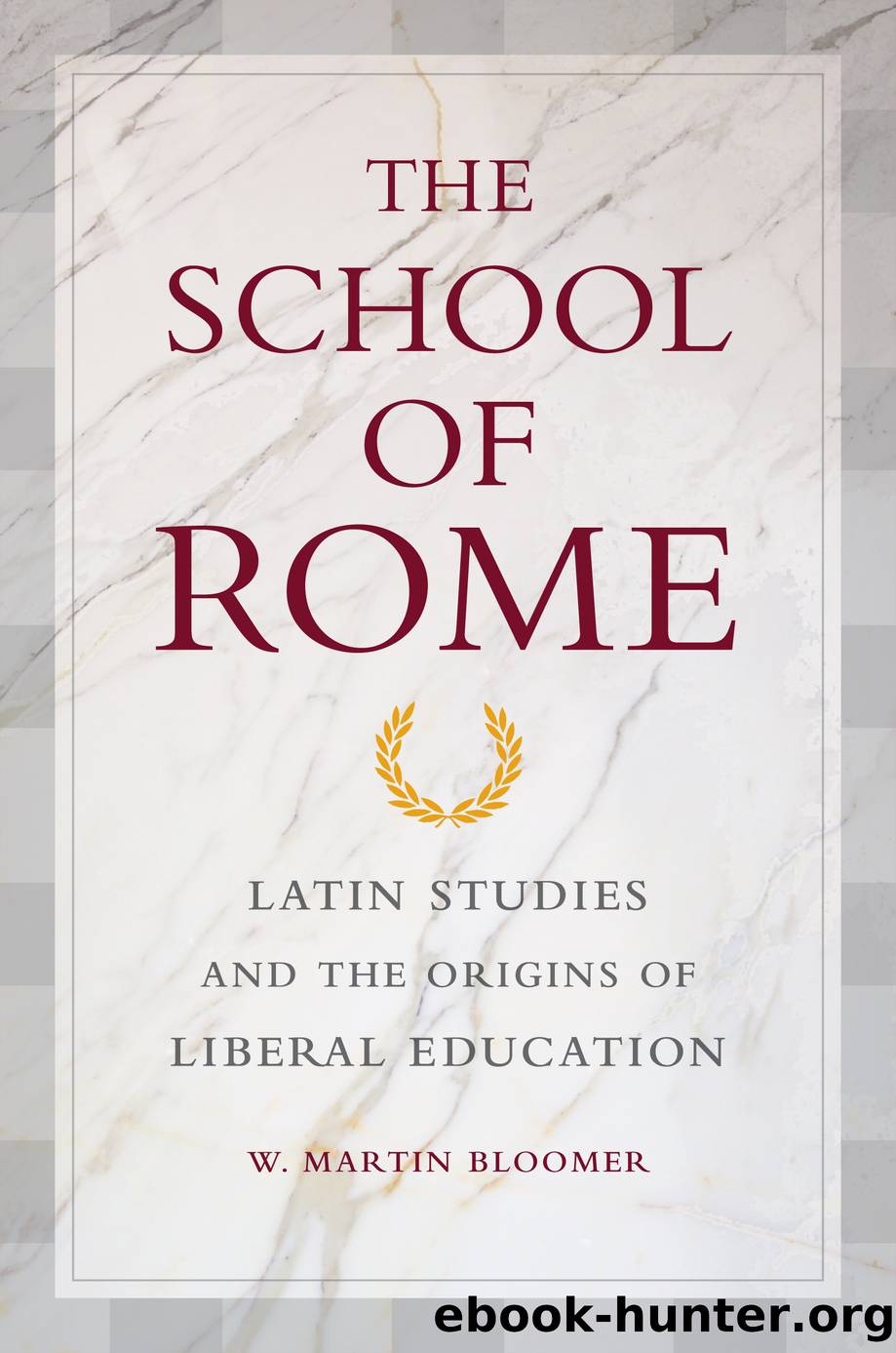School of Rome by Bloomer W. Martin

Author:Bloomer, W. Martin
Language: eng
Format: epub
Publisher: University of California Press
Published: 2011-10-15T00:00:00+00:00
7
The Moral Sentence
In 1605, the great classical scholar Joseph Scaliger reedited a text that had been very successfully edited by Erasmus, the Distichs of Cato. This third-century A.D. Roman school text had lost none of its appeal, but Scaligerâs sense of the popularity and utility of the work was striking. In his edition of the Distichs, he remarked: Est vero iste libellus non solum pueris, sed et senioribus factus. Et ego mihi conscius sum, multos gravissimos et doctissimos viros non puduisse, iam provectos aetate, haec disticha memoriter discere.1 (âIn fact this is a book not only for boys but for their elders. And I myself am well aware that many deeply serious and learned men, in their old age, felt no shame in learning these distichs by heart.â) That old men, in an era of increasing literacy, should pick up a printed copy of a Latin reader and not only read but learn by heart, and take to heart, a series of maxims supposedly written by the archetypal Roman old man some two thousand years before displays remarkable confidence in the efficacy of the text. The flourishing publication history of the text attests that generations found it believable and valuableâbut why, with all the printed and handwritten texts in circulation at the beginning of the seventeenth century, should any reader, much less Scaliger himself, have turned to a pagan, traditional, and slight collection of verse maxims that were not the work of the Roman censor Cato, whose name they had held for fourteen centuries, but a schoolbook that was common, even ubiquitous, throughout the Middle Ages?2
The classical scholar should perhaps be especially sensitive to the impulse to literacy, since in the West this has so often taken the form of a longing to know Greek and Latin. Shards of pottery, bits of wood, and reused papyri scribbled over with the ancient studentâs efforts show the diligent labor and desire to write, to copy, to spell, even to leave his or her own version; and while at times we may have visions of the dull schoolmaster droning on with the paradigms of the dead languages, the history of the learning of Greek and Latin has far more vibrant images. Petrarchâs model epistles would teach us all to write and converse with the ancients (indeed as the ancients). The Neoplatonist physician of the fifteenth century Marsilio Ficino had a near-mystical faith in the power of Greek letters. Influenced by the Cabalists, he imagined that the very sound of Greek promised insight. The Renaissance fascination with the Distichs of Cato reflects a faith that the classical text will make the readerâs thought and language authenticâthat is, concordant with ancient canons of style and with ancient wisdom.3 The Distichs may have contributed to humanistsâ sense of the importance and seriousness of ancient texts, but the allure of the Distichs, and their role in encouraging virtue and Latin, are not limited to the Renaissance. As a favored text, the Distichs are something of a special
Download
This site does not store any files on its server. We only index and link to content provided by other sites. Please contact the content providers to delete copyright contents if any and email us, we'll remove relevant links or contents immediately.
Navigation and Map Reading by K Andrew(4889)
Spare by Prince Harry The Duke of Sussex(4788)
Tuesdays with Morrie by Mitch Albom(4403)
Cracking the GRE Premium Edition with 6 Practice Tests, 2015 (Graduate School Test Preparation) by Princeton Review(4047)
Machine Learning at Scale with H2O by Gregory Keys | David Whiting(3627)
What It Really Takes to Get Into Ivy League and Other Highly Selective Colleges by Hughes Chuck(3553)
Never by Ken Follett(3528)
Goodbye Paradise(3446)
Harry Potter and the Prisoner of Azkaban (Book 3) by J. K. Rowling(3109)
Pledged by Alexandra Robbins(3047)
Kick Ass in College: Highest Rated "How to Study in College" Book | 77 Ninja Study Skills Tips and Career Strategies | Motivational for College Students: A Guerrilla Guide to College Success by Fox Gunnar(2998)
Fairy Tale by Stephen King(2949)
A Dictionary of Sociology by Unknown(2856)
Sapiens and Homo Deus by Yuval Noah Harari(2843)
The Social Psychology of Inequality by Unknown(2766)
Reminders of Him: A Novel by Colleen Hoover(2761)
Graduate Admissions Essays, Fourth Edition: Write Your Way into the Graduate School of Your Choice (Graduate Admissions Essays: Write Your Way Into the) by Asher Donald(2736)
Get into Any College by Tanabe Gen Tanabe Kelly(2631)
Zero to Make by David Lang(2627)
